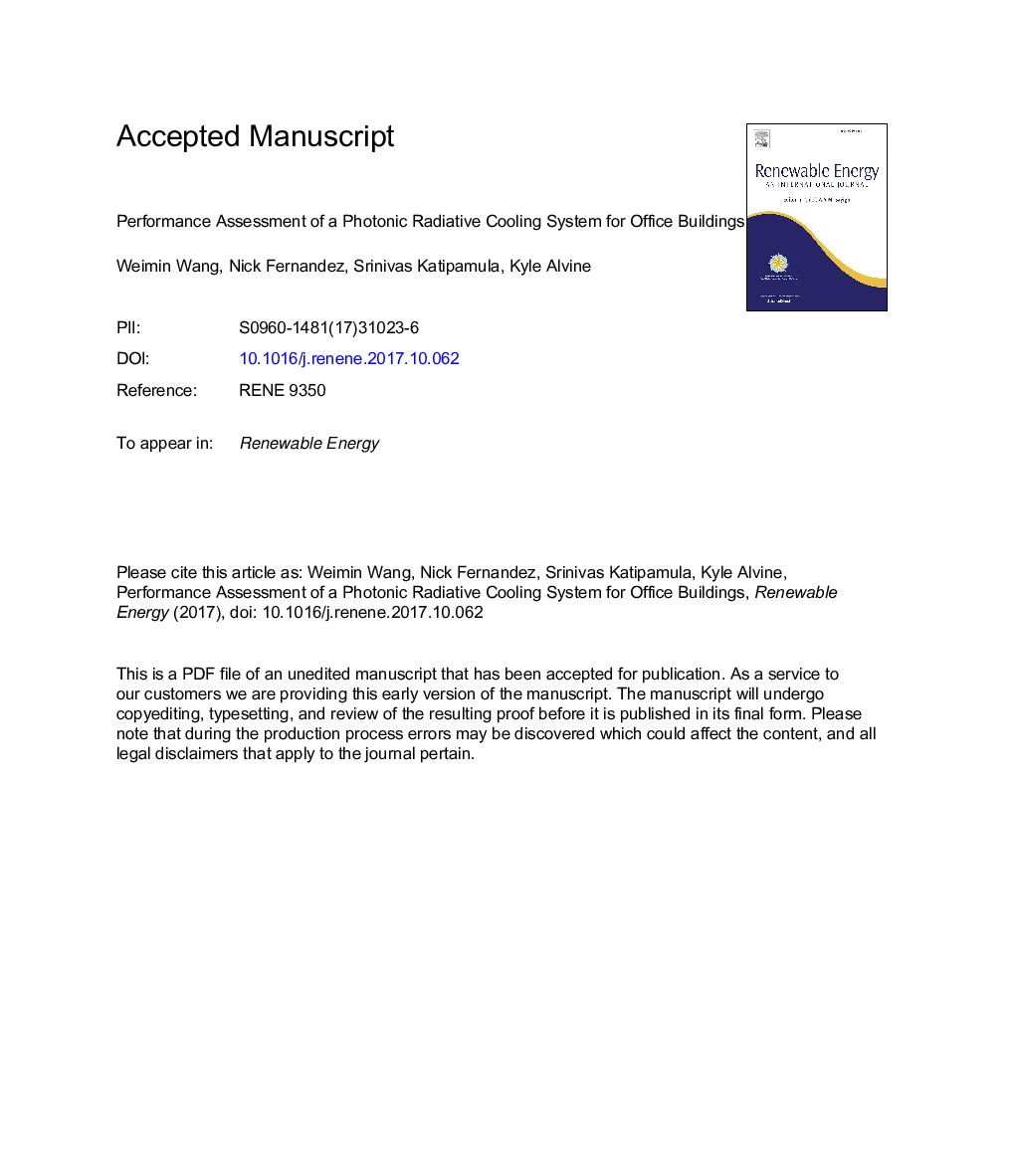| Article ID | Journal | Published Year | Pages | File Type |
|---|---|---|---|---|
| 6764971 | Renewable Energy | 2018 | 33 Pages |
Abstract
Recent advances in materials have demonstrated the ability to maintain radiator surfaces at below-ambient temperatures in the presence of intense, direct sunlight. Daytime radiative cooling is promising for building applications. This paper estimates the energy savings from daytime radiative cooling, specifically based on photonic materials. A photonic radiative cooling system was proposed and modeled using the whole energy simulation program EnergyPlus. A typical medium-sized office building was used for the simulation analysis. Several reference systems were established to quantify the potential of energy savings from the photonic radiative cooling system. The reference systems include a variable-air-volume (VAV) system, a hydronic radiant system, and a nighttime radiative cooling system. The savings analysis was made for a number of locations with different climates. Simulation results showed that the photonic radiative cooling system saved between 45% and 68% cooling electricity relative to the VAV system and between 9% and 23% relative to the nighttime radiative cooling system featured with the best coating commercially available on market. A simple economic analysis was also made to estimate the maximum acceptable incremental cost for upgrading from nighttime cooling to photonic radiative cooling.
Related Topics
Physical Sciences and Engineering
Energy
Renewable Energy, Sustainability and the Environment
Authors
Weimin Wang, Nick Fernandez, Srinivas Katipamula, Kyle Alvine,
